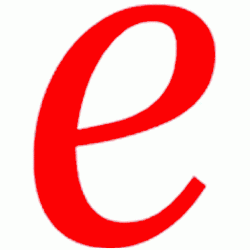BURLINGTON, North Carolina–( BUSINESS WIRE)–The Smithsonian Center for Science Education and Carolina Biological announced new independent study results showing the Smithsonian Science for the Classroom The curriculum improved student scores in schools in North Carolina and South Carolina. Along with professional development, SMitsonian Science for the Classroompublished by Carolina Biological, the leading provider of school science, demonstrated improved achievement in science, math, and reading in grades 3 through 5. The five-year study, “Improving Student Achievement Across State Lines and State Standards “concluded that The print, digital, and hands-on program, along with high-quality professional learning, raises students' standardized test scores. Assessment in the classroom Smithsonian Science for the Classroom The curriculum accompanied by professional learning concluded that the sample of 1,600 students showed statistically significant gains in science on the Stanford Achievement Test (SAT10) relative to their peers, scoring 7 percentage points higher.
As part of the 2019-2024 research, the Center for Research in Educational Policy (CREP) at the University of Memphis conducted a school-level randomized controlled trial following a cohort of more than 1,600 students. Students in grades 3-5 took part in the study from rural and diverse areas of North and South Carolina. Participating school districts were: Alexander, Burke, Caldwell and Polk County Schools in North Carolina; and the school districts of Marion, Marlboro and Orangeburg counties in South Carolina. The study was funded by an Education Innovation and Research (EIR) grant (PR# U411C190055) awarded to the Smithsonian Center for Science Education from the U.S. Department of Education.
On the SAT10, students who are often underrepresented in STEM careers, including: female students, the economically disadvantaged, those with individualized education programs (IEPs), and Black, Indigenous, and people of color, still outperformed their peers in science. The difference for the students was statistically significant. Overall, in both states, all students performed better in reading and math on their state assessments than their peers. During the study, observers also noted extensive or frequent hands-on learning, more than 60 percent more often in classrooms using Smithsonian Science for the Classroom than in comparison schools.
“The results of this new study not only emphasize the quality of our curriculum and professional development to improve students' science, reading and math scores, but also underscore our commitment to helping teachers bring the Smithsonian to their classrooms,” said Carol O' Donnell, Douglas M. Lapp and Anne B. Keizer, director of the Smithsonian Center for Science Education.
Teachers received 12 hours of high-quality professional learning for each of the new science and engineering modules they implemented over three years. Added one module at a time to give teachers the opportunity to become comfortable with the material and a more student-driven learning style. The teachers received Smithsonian Science for the Classroom engineering and physical science modules for your classes.
“Carolina is proud of the results of the classroom study and our partner at the Smithsonian for securing the EIR grant from the U.S. Department of Education, leading the study, and coordinating with CREP at the University of Memphis,” said Jim Parrish, president and CEO of Carolina Biological Supply. Company. “The study was conducted to meticulous standards and provides research results that schools need to choose science resources that truly improve science learning and help teachers develop students' STEM skills. It is noteworthy that teachers who received professional development and Smithsonian Science for the Classroom “It improved not only science scores on standardized tests, but also math and reading scores on state tests.”
Smithsonian Science for the Classroomis a high-quality comprehensive science program with modules in biological sciences, earth and space sciences, physical sciences and engineering developed to meet the *Next Generation Science Standards (NGSS). This elementary curriculum engages, inspires, and connects students firsthand to the world around them through a total of 24 student-led modules. Helps teachers keep classes fresh and interesting for young students and integrate science, technology, engineering and mathematics (STEM) through engaging and hands-on lessons. Smithsonian Science for the Classroom Includes printed and digital components, as well as practical materials. It was voted Most Culturally Relevant Science Program by the National Science Education Association in the 2023 BEST of STEM Awards and received an All-Green rating from EdReports.
Smithsonian Science for the Classroom is available to schools across Carolina. For information, visit carolina websitecall (800) 334-5551 or email resume@carolina.com.
* NGSS is a registered trademark of WestEd. Neither WestEd nor the lead states and partners who developed the Next Generation Science Standards were involved in the production of this product and do not endorse it.

!function(f,b,e,v,n,t,s)
{if(f.fbq)return;n=f.fbq=function(){n.callMethod?
n.callMethod.apply(n,arguments):n.queue.push(arguments)};
if(!f._fbq)f._fbq=n;n.push=n;n.loaded=!0;n.version=’2.0′;
n.queue=();t=b.createElement(e);t.async=!0;
t.src=v;s=b.getElementsByTagName(e)(0);
s.parentNode.insertBefore(t,s)}(window, document,’script’,
‘https://connect.facebook.net/en_US/fbevents.js’);
fbq(‘init’, ‘6079750752134785’);
fbq(‘track’, ‘PageView’);
 NEWSLETTER
NEWSLETTER





